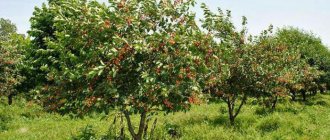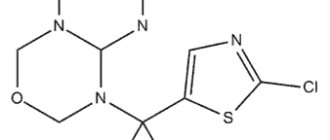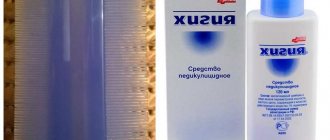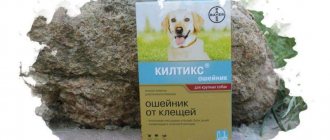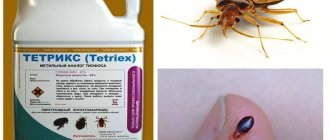LATEST NEWS
You can often observe how the fruits on the trees first begin to rot and then dry out. You can fight this disease with a urea solution, starting in the fall, and then repeat in early spring.
Spraying trees with urea in the fall will prevent their disease next year.
Spraying with urea begins when 50-75% of the leaves of the trees in the garden have fallen. Precaution is not at all superfluous, since the dosage is horse-dose, 600-700 g of urea per 10 liters of water. If leaf fall has not yet begun, the foliage will burn and the trees will not survive the winter well.
It is believed that this treatment replaces spraying with 3% Bordeaux mixture, although in early spring it is still better to spray the garden with Bordeaux mixture. But urea has an important advantage - it is harmless and quickly decomposes in air.
In addition, not only trees are sprayed with urea, but also the soil under them, which heals the garden and accelerates the decomposition of fallen leaves. This method works great against infection and can even kill some of the pests that have gathered to spend the winter on trees. True, it all depends on the quality of processing.
Spray the trees in calm weather with fine-droplet jets, trying to evenly water the trees with foliage on both sides.
No matter how good spraying with urea is, it does not cancel subsequent garden treatments in summer and spring. Although it can replace spring spraying of the garden with Bordeaux mixture. The effect of spraying can be enhanced by sanitary pruning and careful collection of plant debris in the garden.
Heaps of garbage, remains of branches after pruning - everything must be burned so as not to leave refuges for infection and pests.
MOST READ FROM PARTNERS
It will also be useful to remove dead bark from the trunks by first laying film or cloth under the trees. All cleaning is also sent to the fire.
Sometimes you can observe on fruit trees how the fruits first rot and then gradually dry out on the branches. You can help the trees by spraying them with urea in the fall. This disease can be prevented partially or completely, depending on the extent to which the garden is affected.
In early spring, the treatment can be repeated even before the buds bloom on the branches. I spray trees in the fall with urea, dissolving it in a 500-600 g bucket of water. This disease is contagious and can persist in fallen leaves and fruits, on the ground and in grass growing nearby. Therefore, I carefully spray not only the trees, but also the ground around. I filter the solution through a triple layer of gauze so that the spray is fine and does not clog the nozzle.
I repeat the treatment in early spring, and my garden is practically free of this disease.
Urea - what is it?
- Urea is a fertilizer that is known to every gardener and gardener. Another name is urea. Contains about 46% nitrogen. Presented in the form of ammonium salts involved in biochemical processes. Nitrogen is necessary for all metabolic processes.
- Urea is quickly absorbed by any plants.
- The drug is more active than other fertilizers that contain nitrogen.
You can buy urea in agricultural stores. Sold in the form of white granules. It dissolves in water without residue and has no specific odor.
Important! Nitrogen is of paramount importance for plant development. It is necessary for the root system. This is the basis for the formation of vital nucleic acids.
The importance of fertilizers such as urea cannot be overestimated.
Properties and characteristics of urea
A protein compound called Urea (and this is urea) was popular among agronomists of the century before last. Externally, urea is small, neat granules of white, milky or translucent color. After entering the soil and interacting with groundwater (including precipitation and irrigation), urea is converted into ammonium carbonate.
With further decomposition of the components of the drug, ammonia and ammonium bicarbonate are released, which gradually turns into nitrate form. Thanks to the long process of decomposition with changing forms of compounds, plants dosed receive all the necessary microelements with each watering.
Of all the nitrogen fertilizers used today, urea is the most concentrated preparation. It is suitable for both root and foliar feeding and can be used as part of more complex nutrient mixtures. Urea helps to increase the level of nitrogen in the green mass of plants, the formation of protein and plant tissue cells. In addition, when sprayed early in spring, it can be used as a prophylactic against certain fungal diseases and pests.
On the contrary, a lack of nitrogen affects plant growth and external characteristics. In horticultural crops, nitrogen deficiency manifests itself in the form of yellowing and shredding of foliage and thinning of shoots. In summer, the problem can be recognized by early leaf fall, and in early spring by the formation of small buds. If the situation is not corrected in time, nitrogen starvation can cause the death of the plant.
Timing for autumn garden treatment
The end of leaf fall is considered a suitable time to treat the garden with a urea solution. Usually this is the end of October or the beginning of November. It all depends on the climatic conditions of the region.
Why is it important to spray plants without leaves? The fact is that leaves play an important role in the development of plants. If the foliage is green, this indicates that the plant is not ready for winter. Leaf plates capture the energy of the sun and convert it into organic substances. This process takes place in chloroplasts and is called photosynthesis. With the help of leaves, through evaporation, plants regulate the amount of water coming from the roots. This ensures the movement of nutrients along the trunk and branches. Gas exchange with the surrounding air occurs through the leaves. Carbon dioxide serves as a source for the synthesis of vital elements for plant development.
Forced removal of leaves in the autumn can be disastrous for fruit trees and shrubs. When spraying leaves with urea in the autumn, the possibility of losing some foliage cannot be ruled out. This reduces the resistance of trees in winter and negatively affects crop yields.
Spraying trees
Spraying should cover the trunks and crowns of plants as much as possible. If they already show signs of disease, special attention is paid to the affected areas. Some gardeners rake and burn leaves. But you don’t have to remove it, but treat it thoroughly with urea. The drug destroys pests and infectious agents, promotes rapid decomposition of leaves. As a result, they turn into an excellent natural fertilizer for the garden.
When performing the procedure, it is important to adhere to several rules:
- Spraying is carried out only after preliminary preparation has been completed: digging up the soil, removing affected branches, whitewashing.
- A dry, sunny day with no wind is suitable for processing. If the weather is hot, you should start work early in the morning or after sunset.
- The preparation and use of the solution is carried out only in protective gloves, glasses and clothing.
- The most effective spraying is done using a special sprayer. This device allows you to process even the tallest plants.
- When working, you should not spare the composition, since it will not cause any harm to trees and shrubs.
- If precipitation occurs immediately after treatment, the procedure is repeated. Otherwise, the desired result will not be achieved.
Branches, trunks and soil are treated with urea. It is important to adhere to the recommended dosage. A high concentration of the solution burns the plants and provokes early leaf fall. As a result, trees will receive fewer nutrients and will be more susceptible to low temperatures.
Application to the soil
Urea is also suitable for caring for various ornamental and fruit trees and shrubs. This universal product is applied to the soil to feed and protect plants from parasites. Currently, urea is considered one of the most popular fertilizers. Urea is safe and highly effective, which explains the high demand from consumers. The cost of fertilizing is an order of magnitude higher compared to nitrogen-containing analogues. The fact is that urea is not a natural compound. It is extracted through a synthesis process from carbon dioxide and ammonia. Experts are confident that the price fully justifies the quality of the fertilizer.
Nitrogen starvation in plants is manifested by several pronounced signs:
- slow growth of seedlings;
- curling and yellowing of leaves;
- weak flowering, lack of ovaries;
- low yield, early fruit shedding.
Fertilizer is applied in the morning or evening, always on a dry day. If it is raining outside, it is worth rescheduling the work to another time. A solution is often used; for preparation it is necessary to dilute 30–40 g of urea in 10 liters of water.
Preparation of urea solution for autumn treatment of garden crops
Different concentrations of the drug are used to treat trees and shrubs. This depends on the condition of the trees, namely the degree of disease infection and insect damage. In this case, the age of the tree does not matter.
To treat a garden that has not been susceptible to disease, it is enough to prepare a solution of 300 grams of urea dissolved in a bucket of water. If extensive biological damage was noticed during the growing season, the urea consumption is doubled.
Some gardeners believe that it is absolutely forbidden to treat plants with nitrogen fertilizers in the fall. After all, this can cause rapid development of shoots. That is why treatment with the drug is done on the eve of frost, which eliminates the possibility of extending the growing season. The so-called “eradicating” treatment with urea solution will have a detrimental effect on garden pests and will destroy fungal and bacterial infections.
Fruit trees that have shed approximately 70-80% of their foliage are subject to treatment. However, the urea solution in this case should be weaker and amount to about 6%.
Methods of application
Urea as a fertilizer for plants is applied in three ways:
- directly into the ground. The granules are distributed over the area and covered with soil;
- solutions. To achieve quick results, urea is dissolved in water and the solution is watered at the root of the plant;
- leaf method. To feed plants, a weakly concentrated solution is prepared, which is distributed onto the above-ground part of the plants using a spray bottle.
In order not to harm the plant, it is not recommended to use two different methods at the same time. This can lead to high nitrogen concentrations and plant death.
Common mistakes when using urea to fertilize plants in the garden
Elimination of diseases and pests, processing features
There are almost no differences in methods for eliminating insects and diseases. The peculiarity of urea is that it can act as both a fungicide and an insecticide .
Let's conduct a short educational program for those who are not yet familiar with such terms.
Fungicides are those that are used to fight diseases . These can be viruses, fungi or bacterial pathogens.
Insecticides are used to kill insects that harm plants .
Let's get acquainted with processing techniques in more detail.
How to eliminate harmful insects
Among the variety of insects that cause significant damage to fruit crops, three species can be distinguished - black or green aphids, Colorado potato beetles and various nematodes. You can get rid of them by treating the garden with urea in the fall.
Harmful insects settle not only on the surface of all parts of the plant, but also in the ground that is adjacent to it. To prepare ten liters of working solution you will need half a kilo of urea (urea). The amount of the finished drug depends on the scale of the disaster. If insects are firmly established in your area, calculate how much of the drug is needed to spray 10 m².
Practice shows that 3 liters of solution is enough to treat plum and peach trees planted in this area. The calculation includes tillage of the soil near the tree trunk in order to destroy pests that settled in the summer and for prevention.
Aphid
The insect harms young fruit trees and berry bushes. Aphids feed on cell sap. It not only devours the leaves themselves, but also releases poison, which causes the leaf blades to curl. They take the shape of a “house” and are located on the apical parts of the branches. Aphids hide in such a shelter from birds and other hunters. This allows her to maintain the population.
If an abundance of these pests was observed during the growing season, autumn treatment of the garden will help get rid of them. Next season they will not be a nuisance with their presence.
Features of application
To get the maximum effect and benefit from a fertilizer, it is important to understand how the substances included in it work. When the drug gets into the ground, it begins to interact with soil enzymes and bacteria. Ammonium carbonate is formed, and with subsequent decomposition - ammonium bicarbonate and ammonia.
Soil bacteria play a major role in decomposition processes, the activity of which begins when the earth warms up. Therefore, fertilizing in the fall, when the soil temperature drops, has less effect than applying fertilizer in the spring.
It is also taken into account that ammonia formed from ammonium carbonate upon contact with oxygen quickly evaporates from the soil, so urea granules must be embedded in the soil. The approximate depth is 7-10 cm, depending on the type of soil.
Methods for applying urea:
- when digging or planting seedlings, seedlings, sowing seeds - embedding in the soil;
- watering;
- spraying with a working solution (during nitrogen starvation, to protect against diseases and pests).
For root dressings, prepare a more saturated solution than for leaf treatments, and increase the percentage of the drug. Strictly follow the instructions for using urea in the spring, do not exceed the dosage and control the consumption of fertilizer.
Prevention and destruction of pests
How to prepare a garden for spraying with urea
A list of necessary measures that contribute to achieving the required effect. What needs to be done before the procedure for autumn treatment of the garden with urea:
- remove foliage that has formed after leaf fall . The leaves of fruit trees and shrubs are always replete with representatives of pathogenic microorganisms and insects. You cannot put such plant residues in a compost pit. They should be burned without regret to prevent infection of the entire garden;
- The soil under trees and shrubs must be thoroughly loosened and weeds removed. Phacelia green manure is used to control weeds in tree trunks. It will not only cope with this task, but will also increase soil fertility. In addition, a carpet of lilac shades under fruit crops will decorate the garden and attract bees for pollination. This technique will increase crop yields;
- carefully examine the stem part of the plant. Manually remove any pests found and damaged bark, especially in places where it has fallen away from the trunk. A huge number of insects accumulate here for the winter;
- carry out sanitary pruning. Trim broken and diseased branches. This type of pruning is recommended throughout the growing season.
Autumn nitrogen prevention. Features of the procedure
Autumn treatment of trees and shrubs with urea solution should be carried out according to the following rules:
Rules for autumn nitrogen prevention, features of the procedure
- Choose a time to work when the weather is good. Ideally, a sunny day without wind would be ideal. If it rains, the procedure should be repeated;
- For spraying, use a spray bottle. It can be purchased at the store. Some gardeners use a plastic bottle with a nozzle to spray liquid;
- strictly follow the recipe for preparing urea products. Violation of proportions can have a detrimental effect on plants;
- it must be processed in such a way as to wet both sides of the sheet plate;
- Treatment should not be carried out at ambient temperatures of -5°C or lower. The efficiency of processing in this case is reduced to zero.
https://www.youtube.com/watch?v=f_L6mcpK8fo
Apricot processing in autumn. How to feed apricots in the fall
The healthiest foods are home-cooked meals. This applies to berries and vegetables. But for successful cultivation of crops, timely feeding is necessary. Apricot responds especially to fertilization. This amazing plant can delight the eye with the beauty of spring flowering and the abundance of summer harvest. To successfully grow it and increase yields, it is necessary to apply nutrients in a timely manner. How to feed apricots in the fall?
Autumn spraying with urea
Autumn spraying of apricot with urea is used to prevent infectious diseases of the plant. Urea is used to eliminate diseases such as fungal infections, scab, spotting, and putrefactive diseases. Urea, a concentrated nitrogen fertilizer, is also used to destroy pests that overwinter in apricot bark. The best time to spray apricots in the fall is late autumn, when the leaves have already fallen from the tree. Treating the plant before the leaves fall can lead to burns, which will affect not only the benefits of prevention, but also the tree’s resistance to frost. Apricots should be sprayed with urea in dry, windless weather. This will allow the tree to absorb nutrients to the maximum and protect the environment and humans from the negative effects of the pesticide. The process of spraying with urea:
- Trees older than 10 years need preparation. Many “middle-aged” plants have bark diseases that must be eliminated before spraying. This can be done manually or mechanically using a brush. Simple steps will help the healing agent penetrate directly into the affected area;
- Prepare a solution: use 500 g of concentrated fertilizer per 10 liters of water. The solution should be prepared taking into account the manufacturer's recommendations;
- Using a sprayer, distribute the solution over the apricot crown. For disinfection, it is also recommended to spray fallen leaves and soil near the tree.
Urea is a chemical substance that allows you to have a healthy tree and helps the plant bear fruit abundantly. When working with the product, it is recommended to use personal protective equipment. Nitrogen fertilizers will give the tree strength and resistance to adverse environmental factors.
Whitewashing an apricot trunk
Feeding and protection should be carried out before the first frost in calm and dry weather. Both the trunk and skeletal branches should be treated with the solution. Whitewash is a reliable and proven protector against pests, fungal diseases and infections. It also increases the wood’s resistance to negative low temperatures. To prepare the solution you will need:
- 10 liters of water;
- 2 kg of lime;
- 400 g of copper sulfate;
- 1 kg of clay;
- 1 kg cow dung.
Mix all components until smooth and apply to wood with a brush. Fertilizers of this kind have a beneficial effect on the development of young plants. But for it, lime should be replaced with chalk.
Fertilizers to increase yields
Root feeding of apricot allows you to increase yields next year. Fertilizers are applied in mid-autumn. For deep digging, humus is used in an amount of up to 4 kg, potassium fertilizers in the amount of no more than 70 g per tree. Apricot responds well to the addition of superphosphate. It is used at a rate of 40 g/m2. Apricot responds well to mineral fertilizers. You can use wood ash to feed it.
Advice from breeders on autumn fertilization
To add nutrients to the soil under a 2-year-old tree, up to 15 kg of rotted manure, 100 g of superphosphate and 40 g of potassium chloride are used. To add organic matter under a 6-year-old tree, 10 kg more manure is used. It is also worth increasing the application of saltpeter and phosphate. A tree that is more than 9 years old requires the application of up to 80 kg of organic fertilizer, up to 370 g of saltpeter, up to 880 g of phosphate and up to 250 g of potassium. Apricot needs timely application of iron and nitrogen. Wood is sensitive to chlorine, which is why potassium chloride should be used carefully, strictly following the manufacturer's recommendations. For apricots, it is better to use potassium sulfate. Apricot fruits have unsurpassed taste and a memorable summer aroma. To successfully grow plants, they use autumn fertilizing, which is no less important than adding special nutrients in the summer or spring. But when applying medications, it is worth remembering that overfeeding a tree is just as bad as not providing it with the necessary components for full development. Too much fertilizer leads to decreased yields, slow growth and development, and loss of environmental sustainability. Fertilizers must be applied in a strictly prescribed concentration and then they will be beneficial: the apricot harvest will impress with its scale.
Safety precautions when working with urea
Urea belongs to the category of low-toxic substances. It does not pose any serious danger to human health. However, compliance with safety regulations when working with chemicals must also be observed with this drug:
- To prepare the working solution, use convenient containers. They should be of such a size that the liquid can be stirred without the risk of overflowing. It is recommended to use plastic or stainless steel containers;
- use sprayers specifically designed for this purpose. They can be purchased in specialized salons. This will prevent overspending and ensure that all parts of the plants are treated efficiently. You can choose a sprayer that is convenient in volume;
- carry out processing in a clear, calm period. This will help prevent the product from getting on your skin or eyes. Fill the sprayer with the solution carefully. If by chance the product gets into your eyes and mouth, you should stop working, rinse your eyes and rinse your mouth with water. Avoid ingestion of the drug;
- When treating your garden with urea, use protective equipment. These are, first of all, plastic glasses and rubber gloves, long sleeves, and a comfortable headdress.;
- When you finish work, wash your hands and face with soap. Put your clothes in the wash.
Dosages for application to soil:
- For potatoes, various varieties of onions, tomatoes, cabbage, and sweet peppers, no more than 20 - 25 g of urea per 1 m² will be required.
- For feeding cucumbers and legumes – 5 – 8 g per m².
- Gooseberry bushes are fertilized with urea diluted in water in proportions of 10 g per bucket of water (10 l).
- For strawberries, blackberries, and garden strawberries, you need to dissolve about 35 g of urea in 10 liters of water. Each plant should have at least 1 liter of ready-made solution.
- Zucchini, squash, eggplant need 10 - 12 g per 1 m².
- Currants will bear more fruit if you water them with urea solution (20 g per bucket of water).
If necessary, fruit trees are fertilized during the fruiting period. Apple trees are watered with a mixture of 230 - 250 g per bucket of water. Plums and cherries are fed with a less concentrated solution: 120 - 150 g of urea per bucket of water. It is not necessary to dilute the fertilizer with water. You can add dry crystals, but then you need to water abundantly.
If garden plants are fertilized with organic substances, the application rates of urea are reduced by 1/3 or 2 times. It all depends on the amount of organic matter.
Safety precautions
The work is carried out using a special spray gun, which thoroughly sprays the necessary substances. To protect your health from the negative effects of pesticides, you should take the following precautions:
prepare and spray the solution only while wearing protective gloves, goggles and a respirator; all work is carried out only on a windless, dry day; After completing the procedures, you must thoroughly wash your hands and face, and immediately wash all work clothes.
Safety regulations are mandatory to follow.
Conclusion
Treating the garden with urea is not a difficult task, but it is effective. Proper implementation of the procedure will protect trees from many diseases and pests. Due to its nitrogen content, urea activates plant growth, productivity and resistance to negative factors.
Reviews and advice
Alexander. City of Rostov.
Every year, garden trees are attacked by insects, and aphids or scale insects appear. The harvest, of course, can be saved, but such a hassle happens every year. I was looking for an effective treatment method to rid the garden of pests for a long time. I'm not a fan of treating trees with chemicals. I always try to make do with herbal infusions. But this fall I watched my neighbor spray his plantations. We got to talking and it turned out he was using a urea solution. Sergei convinced me that this is an organic fertilizer with mineral components. I decided to take advantage of his experience. Sprayed all the fruit plantings - berry bushes and apple trees. In the spring I observed such abundant flowering as I had never seen before. The harvest pleased me with the quantity and appearance of the fruit. The insects did not disappear at all, but there were significantly fewer of them. I adopted this technique. I will do the treatment every fall. This saves time and increases the fertility of the garden.
Alevtina. City of Kazan.
I grow black currants at my summer cottage. This is our favorite berry. The taste and benefits are excellent. But diseases do not leave the bush alone. Powdery mildew is especially worrying. The disease appears every year. The berries have not yet been harvested and cannot be treated with chemicals. I spend a lot of time trying to somehow reduce the spread of the disease. I tried spraying it with a urea solution before winter. I got the information from the Internet. True, I only tried it on one bush, and regretted that I had not sprayed all the plantings. When processing, you must remember that it should be carried out only after leaf fall. This will not harm the bush. If you spray on green leaves, they curl and fall off. Such plants may not survive wintering.
How to spray trees with urea
MOST READ FROM PARTNERS
It is best to carry out autumn spraying with the onset of cold weather. Already after the first frost, at the end of autumn, you can start. I prepare urea with a 5% solution, which contains almost half nitrogen.
Spraying trees with urea in the fall helps to cope with many infectious and fungal diseases. It completely destroys them, but for prevention, spraying must be repeated in early spring.
I spray all the fruit trees, of which there are quite a few in my garden. These are apple trees, pears, plums, and cherries that need emergency help. At the same time, if the tree is not tall and young, I can almost completely bathe it in a urea solution using a shoulder sprayer. Then in the spring I don’t have to carry out the treatment.
If the tree is tall and mature, with a large spreading crown, then additional spring spraying is mandatory. I would advise spraying the ground around the trees in the fall with a higher concentration of urea. This will allow you to evenly moisten all fallen leaves, which are the main causative agent of various infectious diseases. Many people rake up the leaves, dry them and burn them. But this produces toxic, suffocating smoke, which is very harmful to health. In addition, the wind, while the leaves dry out, will spread half of them throughout the garden, spreading the infection throughout the entire area.
Sprayed leaves can be safely used in compost, and they can be partially covered with the ground around the trees, preserving and increasing its fertility.
Spraying trees with urea in the fall can replace treatment with Bordeaux mixture. This is an excellent product that is completely harmless to the environment. But no matter how good it is, it cannot replace the treatment of trees in summer and spring with fungicides, which is carried out for preventive purposes in order to keep the garden always healthy and fruitful. Therefore, in the spring I spray the garden, first during budding, then during flowering.
MOST READ FROM PARTNERS
When the flowers have set, you can spray a third time. These events save the garden from pests, which, as soon as the sun warms up, rush to the trees. Among them are hatched larvae of silkworms, pear psyllids, sawflies, and various larch caterpillars. They can be successfully combated using traditional methods, a solution of slaked lime or colloidal sulfur.
Advantages of the drug
Let's talk about the advantages:
- Urea begins to act almost immediately after treatment and remains for a long time.
- It is used both in open ground and in buildings protected from precipitation, such as a greenhouse.
- Can be used throughout the year. Naturally, except for winter. Violating the proposed recipe will not lead to dire consequences, but may affect the quality of processing.
- The ability of the drug to delay the growing season indicates a clear advantage of the drug. Spraying trees with urea in the spring before buds open helps the plant survive the threat of late frosts.
- Correctly performed spring treatment of fruit trees with granulated urea increases the yield of any crop.
Advice! To remove old stumps, dilute a highly concentrated mixture and treat. This technique will speed up the process of tissue decomposition.
Urea - composition
Confusion often arises due to the names: urea and carbamide, since many believe that we are talking about different substances. In fact, urea is urea, the same fertilizer.
The appearance of the two names is associated with different methods of obtaining urea. Back in the 18th century, urea was experimentally isolated from ordinary human urine (hence its first name).
Currently, the product is obtained by synthesis and is called urea. Although both names are used, both in everyday life and in scientific circles.
THIS IS INTERESTING! Urea as an additive is used in the production of chewing gum, as well as in the baking industry.
Preparing trees for processing
To carry out the first treatment of fruit trees with urea, they must be prepared in early spring. At this time, the garden is checked and some preventive actions are taken:
- cut off dry, frostbitten, damaged shoots;
- loosen the soil near tree trunks;
- the bark is checked for cracks and dead areas, if necessary, cleaned with a metal brush;
- check cracks in the bark for the presence of insects; treatment with urea is carried out only after their destruction;
- using a rake, they collect dry grass, fallen leaves from last year, and other debris, because bacteria and larvae can live in such an environment.
The first spraying of fruit plants is carried out at temperatures exceeding +5°C. Processing in colder weather will not give the desired effect.


